The Balloon Mosaic
This was our last Art History project. The idea was to create a 40' x 46' mosaic of the Mona Lisa out of balloons. We create a grid using yard then started blowing up the 2,000 balloons.
Unfortunately, the weather did cooperate. The wind kicked in by afternoon, twisting our grid and popping our balloons. In the end we decided to dismantle. However, we may try again with a new approach...
Viewing: Blog Posts Tagged with: Art History, Most Recent at Top [Help]
Results 26 - 50 of 71
Blog: Ian Sands (Login to Add to MyJacketFlap)
JacketFlap tags: art history, Add a tag
Blog: DRAWN! (Login to Add to MyJacketFlap)
JacketFlap tags: children's books, Illustration, Events, Art History, childrens illustration, auction, Caldecott Medal, classic illustration, Evaline Ness, female illustrator, Add a tag
Have you ever heard of Evaline Ness? She was an illustrator of many children’s books during the mid-20th century period. At a time when most illustration was still being done in a style of literal realism, Ness was among that group of stylistic pioneers whose work still influences the look of illustration today.
She also has the unusual distinction of having been married for a time to the famous FBI agent, Elliot Ness.
The Bloombury Auction House in New York has an upcoming auction featuring a collection of children’s books signed by Evaline Ness, her Caldecott medal for Sam, Bangs and Moonshine and some never before seen sketchbooks and dummies all of which come from her family collection.
The sale will take place at Bloomsbury Auctions New York on Wednesday, December 9th, but those who won’t be able to attend can view nearly a dozen pieces from the Ness collection in my Evaline Ness Flickr set.
Posted by Leif Peng on Drawn! The Illustration and Cartooning Blog |
Permalink |
No comments
Tags: auction, Caldecott Medal, children's books, childrens illustration, classic illustration, Evaline Ness, female illustrator
Blog: DRAWN! (Login to Add to MyJacketFlap)
JacketFlap tags: science fiction, Illustration, fantasy, Art History, obituary, Don Ivan Punchatz, R.I.P., Add a tag
Larry Roibal alerted me this morning with this post on his blog to the death of Don Ivan Punchatz. Its always sad when a legendary illustrator pass away… but this passing is especially unfortunate when we learn that Punchatz’s widow is now burdened with massive health care bills due to the artist not having had health insurance.
For those who are unfamiliar with the name Don Ivan Punchatz, you may have seen his work for Playboy, Esquire, National Lampoon, Time, Newsweek, and a host of other magazines, countless paperback book covers, the first Star Wars film poster, the cover of the Doom video game… truly a giant. We will miss him.
Punchatz’s obituary at Spectrum
Posted by Leif Peng on Drawn! The Illustration and Cartooning Blog |
Permalink |
No comments
Tags: Don Ivan Punchatz, fantasy, obituary, R.I.P., science fiction
Blog: DRAWN! (Login to Add to MyJacketFlap)
JacketFlap tags: Frankenstein, Harry Borgman, Books, Illustration, halloween, Drawing, Cartooning, monsters, More Inspiration, How-To, Sick, Art History, Dracula, Add a tag
Only two more sleeps ’til Hallowe’en, kiddies! If you youngsters need a little help drawing monsters, then Monsterman ‘Scary’ Harry Borgman can help.
Way back in 1974 Harry drew a little booklet called “How to Draw Monsters”. By then, Harry had been drawing cars, people, landscapes and just about anything else you can think of for more than three decades. Harry began his commercial art career in Detroit in 1946.
In the early 70’s not only was Harry drawing cartoon Draculas… he also drew some gorgeous realistic Dracula illustrations for a book called “Great Tales of Horror and Suspense”.
Harry’s varied career has given him a wealth of esoteric experiences. For instance, though he was never one of “Mad’s maddest artists” he was one of Sick’s sickest artists. The cartoon creeps below are a great example of his ’sick skills’.
Harry is now 81 and still going strong. In fact, he’s just celebrated the first anniversary of his blog. Drop by Harry Borgman’s Art Blog and you’ll see for yourself that this amazing illustrator can teach you how to draw monsters… and a whole lot more!
* I’ll be featuring a dozen scans from “How to Draw Monsters” on my own blog on Saturday October 31st, but you can preview them all ( and tons of other amazing Harry Borgman art) in my Harry Borgman Flickr set.
Posted by Leif Peng on Drawn! The Illustration and Cartooning Blog |
Permalink |
One comment
Tags: Dracula, Frankenstein, halloween, Harry Borgman, monsters, Sick
Blog: DRAWN! (Login to Add to MyJacketFlap)
JacketFlap tags: engravings, John Carrera, Books, Illustration, Printing, Art History, Add a tag


Fans and students of engraving, traditional printing processes, art history, and 19th-century ephemera alike should, like I did, fall instantly in love with Pictorial Webster’s: A Visual Dictionary of Curiosities.
Bookmaker John M. Carrera meticulously restored thousands of engravings from the pages of 19th-century Webster’s dictionaries, and has compiled an extraordinary visual account of Victorian history.
In his introduction to the book, Carrrera suggests that the very juxtapositions of the illustrations tell a story:
The conceptual underpinning is that this book can act as a springboard for individual creativity. It was printed with a belief that the human compulsion to find meaning would lead readers to create stories that explain whole pages and perhaps even inspire some to derive unifying threads that might, in a Joycean fashion, enable a narration of the entire book.
It is a creative and romantic way to look at what amounts to a collection of images very purposefully arranged in alphabetical order, but he continues to admit the book is invaluable even just as pure reference:
The surface function of the book as a visual reference needs little explanation. The book contains many great examples of how to solve problems of illustration. … By virtue of the magnitude of engravings, their varying density and size, the book also becomes a study in design.
In this video I found on Vimeo, John Carrera gives us a detailed tour of the process, tools, and machinery used to print and bind the hand-made jaw-dropping deluxe edition of the book. It is nothing short of book-making porn:
The pricetag of this lovingly crafted tome? $4600.00.
But not to worry. The trade edition of Pictorial Webster’s is an affordable $35.
Posted by John Martz on Drawn! The Illustration and Cartooning Blog |
Permalink |
One comment
Tags: Art History, Books, engravings, Illustration, John Carrera, Printing
Blog: DRAWN! (Login to Add to MyJacketFlap)
JacketFlap tags: Illustration, Cartooning, Art History, spot illustration, Lowell Hess, Add a tag
Lowell Hess is one of the forgotten giants of the mid-20th century cartoon art business. Among his many laudable accomplishments is a year-long series of tiny spots done for Collier’s magazine in the early 50’s.
These spots appeared regularly in a column called “48 States of Mind” and, although tiny in stature, they are huge in the excellence of their content. Brilliant character design, hilarious oddball concepts and meticulous execution make Hess’ tiny Collier’s spots well worth a closer look. You’ll find several more at Today’s Inspiration.
Posted by Leif Peng on Drawn! The Illustration and Cartooning Blog |
Permalink |
No comments
Tags: Illustration, Lowell Hess, spot illustration
Blog: DRAWN! (Login to Add to MyJacketFlap)
JacketFlap tags: Illustration, blog, Caricature, Art History, Add a tag

In the world of art history there is increasing attention being paid to caricature. A rather large bulk of the research seems to be getting done in French. For those interested in a blog full of links to resources and books and conferences on historical caricature, caricatures et caricature.com is just the thing – in French. However, the links work for English-speakers too ;-).
Posted by Jaleen Grove on Drawn! The Illustration and Cartooning Blog |
Permalink |
No comments
Tags: Art History, blog, Caricature
Blog: DRAWN! (Login to Add to MyJacketFlap)
JacketFlap tags: Illustration, Toys, Animation, Art History, optical illusions, Add a tag

Dick Balzer’s collection of magic lanterns, zoetropes, thaumatropes, phenakistoscopes, and other optical toys is one of the finest in the world. He has been collecting “anything and everything invented before the movie camera that produces an optical effect” for 30 years.
The site’s boasts some new flash galleries which replicate some of the pieces’ effects (note: doesn’t seem to work in Safari).
Posted by John Martz on Drawn! The Illustration and Cartooning Blog |
Permalink |
No comments
Tags: Animation, Art History, optical illusions, Toys
Blog: DRAWN! (Login to Add to MyJacketFlap)
JacketFlap tags: Design, Art History, Add a tag

An inspiring collection of Japanese graphic design images from the last half-century over at A Journey Round My Skull (which incidentally is an awesome blog). The above image is tagged, “Yoshitaro Isaka, 1966, ad”.
Blog: DRAWN! (Login to Add to MyJacketFlap)
JacketFlap tags: Art History, cities, Comics, Tintin, Add a tag

The Architects Journal blog has a neat Top Ten list of cities in comics (posted by Rory Olcayto). Because it is obviously written for people who know nothing about comics, it probably doesn’t go in-depth enough for comics experts on Drawn, but it does provide some interesting extras like this pairing of Marlinspike Hall with its inspiration, from Herge’s classic Tintin series. There are also some amusing picky comments from architects in the comments: “Just to be pedantic – you are mixing up Aztec and Inca influences and how Herge used them,” writes Tintin buff Chris Tregenza, who made this map of Tintin’s voyages.
Blog: DRAWN! (Login to Add to MyJacketFlap)
JacketFlap tags: Film + TV, Art History, Add a tag
Really classy short video portrait of designer, Milton Glaser, by Hillman Curtis.
Lots of other great short films about artists on his site.
Also of interest:
Video: Milton Glaser, Chip Kidd and David Eggars
Blog: DRAWN! (Login to Add to MyJacketFlap)
JacketFlap tags: Animation, Film + TV, films, Art History, animated films, film history, Add a tag
We just put Leonard Maltin’s Animation Favorites from the National Film Board of Canada online. You can watch it here.
This feature-length film is comprised of a compilation of NFB films presented by Leonard Maltin. Included in the collection are Begone Dull Care, Mindscape, Log Driver’s Waltz, Getting Started and The Street, among others.
Maltin is a big fan of animated films and animation history and in 1994 he and the NFB put together this compilation of animated shorts he loved from the Board’s history.
Blog: DRAWN! (Login to Add to MyJacketFlap)
JacketFlap tags: tips, Interviews, Illustration, Drawing, disney, How-To, Art History, downloads, Add a tag
 Focal Press have given us permission to reprint a few lessons from their great new book, Drawn to Life: 20 Golden Years of Disney Master Classes, Volume 1: The Walt Stanchfield Lectures. So here’s the first one on Perspective Drawing. More to come…
Focal Press have given us permission to reprint a few lessons from their great new book, Drawn to Life: 20 Golden Years of Disney Master Classes, Volume 1: The Walt Stanchfield Lectures. So here’s the first one on Perspective Drawing. More to come…
(Download the full PDF for the Perspective Drawing chapter here.)
Walt Stanchfield:
You may recall me mentioning a tendency to straighten everything up in a drawing. You know, the crooked-picture-on-the-wall phobia. This tendency goes beyond straightening things up horizontally and vertically, but also depth-wise. That would be like taking the lines in Plate 1a and straightening them up like Plate 1b, which you can see, destroys all illusion of depth.

I am relentless in my crusade against this kind of seeing and drawing. You all have at least some knowledge of perspective, but sometimes the mind wanders and you fail to make use of what you do know. To further complicate matters — beyond just knowing the rules, you have to carefully observe (and feel) the pose so that you can put the two together. So much depends on perspective — not just what is called linear perspective (see Plate 3), which is a system for linear depiction of three dimensions, but also what I will call Spatial Perspective.
In drawing human or animal figures, which are loaded with complicated planes, there would be so many vanishing points you would need a computer to keep track of them. But take heart, there is a simpler method, thanks to Bruce McIntyre, former Disney Studios artist and subsequent drawing instructor. This method involves a few very simple rules which, once understood, are easy to apply, effective, and fun to use.
Here in Plate 2 are the six principles of perspective.


Take the hands first. They illustrate the second rule (see Plate 2), Diminishing Size . The hand farthest away being the smallest. Next, the left hand overlapping the forearm, the forearm overlapping the
upper arm, the shoulder overlapping the chest area, the front of the neck overlapping the far shoulder — all illustrate the fourth rule, Overlap . The way the forearm delineates the contour of the arm as it overlaps the upper arm, and the left shoulder follows the contour as it overlaps at the trapezius muscle, illustrates the fifth rule, Surface Lines. Plate 4b further explains the Surface Lines rule.
The last rule, Foreshortening, is present everywhere in every third dimensional drawing. It should be felt rather than diagrammed, although at times, a few perspective lines may help. Here Donald demonstrates how that particular perspective rule has been pushed to great extremes. This is called forced perspective and is universally accepted as normal.

Related:
Amazon: Drawn to Life: 20 Golden Years of Disney Master Classes, Volume 1: The Walt Stanchfield Lectures.
Download the full PDF for the Perspective Drawing chapter here.
Blog: DRAWN! (Login to Add to MyJacketFlap)
JacketFlap tags: TV, Animation, Film + TV, cartoon, Art History, Add a tag

Like many of us, Jonny Quest was among my absolute favourites shows when I was a kid. It’s one of the few that still holds up (well, to a point anyway) over four decades later. Alex Toth’s and Doug Wildey’s stunning designs and storyboards, along with lush adventurous musical scores by Hoyt Curtin, put it in a class all its own. (And do not mention that “other” Jonny Quest show from the late 90s because la-la-la-la-la-la-la-I-can’t-hear-you!)
So I was delighted when a friend pointed me to this wonderful (fan-made?) Jonny Quest documentary. It’s a bit of a mystery exactly who made it, other than that it was “supposedly made for a one time screening at a private function.”
The whole video clocks in at about 2 hrs and 20 minutes, broken down into 27 short chapters on YouTube, and assembled into this single playlist (two chapters are missing). It’s the perfect way to spend next Saturday morning while you enjoy your Pop Tarts and coffee in bed!
If you’d like to create a single file, you can download all the clips from Chris Webber’s blog (he’s the fellow who posted the work on YouTube, but not its author) and assemble them together into a single file. (If you do, and manage to upload it somewhere to share with others, please let me know and I’ll add the info to this post.)
About the video, Chris says:
The original creators of the documentary have given me permission to share this unique documentary but ask once again that if you do download it and decide to copy it or share it, please do not sell it or in any way create profit with it. This was their sole requirement for posting it on YouTube and now here on this blog.
Blog: DRAWN! (Login to Add to MyJacketFlap)
JacketFlap tags: Events, Art, Caricature, Art History, contests portraits harper politics cuts funding arts canada, Add a tag

While the rest of the world is dizzy with Hope and Change (and believe me, we’re happy for you us), we here in Canada are stuck with the status quo and a conservative government determined to slash and burn the arts.
It was in this spirit last week that the government led by Stephen Harper quietly canceled long-standing plans for a National Portrait Gallery.
So Art Threat, the political art blog, taken matters into their own hands:
Since Stephen Harper canceled the National Portrait Gallery, we decided to create our own in his honour. We’re inviting artists to submit their portrait of Canada’s Prime Minister for inclusion in the Stephen Harper Portrait Gallery, and their chance to win (minor) fame and riches!
The prize is (CA)$1000. Find out more here.
Blog: DIANE SMITH: Illo Talk (Login to Add to MyJacketFlap)
JacketFlap tags: illustration friday, homeschooling, class, art history, Add a tag
Well...I at least looked at the Illustration Friday topic and even doodled a few thoughts. But, this just isn't going to be the week to get something like that done.
Blog: DRAWN! (Login to Add to MyJacketFlap)
JacketFlap tags: Art History, Add a tag

Another beautiful example of public historical archives being returned to the people through the Internet.
The National Collection of War Art is composed of about 1,500 artworks, including portraits, battle scenes, landscapes and abstracts, depicting those who served New Zealand in times of war, and the arenas in which they served.
It includes both official pieces of war art, by artists formally commissioned by the New Zealand government, and other unofficial art works that were acquired by or donated to the collection.
The featured lithograph is called On the railways - engine and carriage cleaners, 1917 by by Archibald Standish-Hartrick.
Also of interest:
Willie & Joe, by Bill Mauldin
Blog: AmoxCalli (Login to Add to MyJacketFlap)
JacketFlap tags: Art history, artists, mosaic, Western Art, Antony Mason, John T. Spike, time periods, illustration, Add a tag
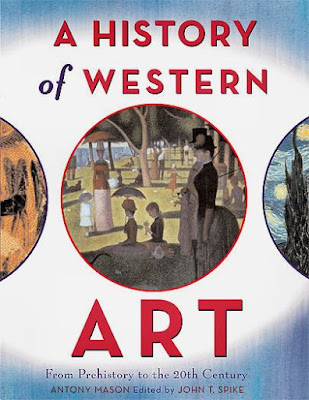
A History of Western Art: From Prehistory to the 20th Century
Author: Antony Mason
Editor: John T. Spike
Publisher: Abrams Young Readers
ISBN: 0-8109-9421-6
EAN: 9780810994218
The publishers aren’t exaggerating when they write that this book is lavishly illustrated. Each page is sumptuously, decadently illustrated with amazing works of art. It’s a visual feast as well as an informational one. The book is set up in format that makes it the subject easy to understand. There are well-defined descriptions of not only the art depicted but in some instances, of the process involved in creating it. I loved simple, yet clear arrows pointing from a description or a process or symbology of a particular piece of art to the section of work that it’s describing. I found the descriptions of how mosaics were made particularly fascinating.
I loved that this book depicted time periods and movements in art like Surrealism or Rococco. I had a lot of fun teaching my grandchildren about sculpture or architecture which is Jasmine’s favorite part of the book. She loves how the illustrations of the buildings like the Guggenheim have a slice taken off so that you can see the inside. I find it remarkable that a five-year old is this keenly interested in Frank Lloyd Wright and I attribute her interest in a large part to this excellent book with its friendly style.
This is a book that spans age groups. I get so much out of it each time we open it to another page and the grandchildren, ages 2 and 5 find so much to love about it. They ask me to pull it down from the shelf again and again and each one has pages that they just love to touch and point at. I on the other hand am entranced by the quality of the paper, the illustrations and photographs of the artwork and can gaze in awe of the David Hockney collage for hours on end.
I wish our schools could have copies of this book in every classroom for every student. I think this book and books like this are timeless and should be every child’s right. Art is so very important and this book does so much to educate about it. You can’t help but fall in love with art after reading this and it inspires the creativity within. I know that for me, its shown me new meaning to a painting I’ve loved and lit a spark in me to find out even more. Books that fuel the thirst for knowledge are treasures.
Highly, highly recommended for anyone of any age.
Book Description from publisher:
Lavishly illustrated with more than 250 full-color reproductions of artworks, details, photographs, and documents, this informative book provides a sweeping overview of Western art. The book begins with the cave paintings at Lascaux, France, and continues on with the art and architecture of ancient Egypt, Greece, and Rome through Early Christian, Byzantine, and medieval art and on to the Romanesque, Gothic, Renaissance, and Baroque periods. Then it proceeds from Neoclassicism, Impressionism, Post-Impressionism, and Modernism up to the art of the late twentieth century. The book is filled with paintings, sculpture, mosaics, and architecture by such renowned artists as Paolo Uccello, Jan van Eyck, Filippo Brunelleschi, Leonardo da Vinci, Rembrandt, Gainsborough, Goya, Turner, Monet, Renoir, Auguste Rodin, Georges Braque, Edward Hopper, Jackson Pollock, David Hockney, and Andy Warhol.
An essential tool for classrooms and libraries as well as a wonderful gift for young people interested in art.
About the author
Antony Mason is the author of more than sixty books. In addition to more general histories of art, he has written biographies for children on Leonardo da Vinci, Rembrandt, Monet, Cézanne, Matisse, Picasso, and Chagall. He lives in London, England. John T. Spike is an internationally recognized art critic, curator, and noted historian of Italian art of the fifteenth through eighteenth centuries. He was born in New York City and resides in Florence, Italy.
Blog: DRAWN! (Login to Add to MyJacketFlap)
JacketFlap tags: Art History, Clothing, Art, Add a tag

I love, love, love these cartoonish studies of “the costumes of the Portuguese” from an album of sketches dating back to 1836. I spotted these over at the mighty BibliOdyssey. The high-res versions can be found at the National Library of Portugal.
Previously: BibliOdyssey: The Book
Blog: DRAWN! (Login to Add to MyJacketFlap)
JacketFlap tags: Toys, Art, Art History, Design, Add a tag

Wow.
BiblioOdyssey presents a handful of wonderful late 19th century and early 20th century Japanese toy designs from this massive database of over 60 galleries of these images.
More wonderful selections in the post, Toying with Japan.
via Jillian Tamaki
Also of interest:
Mythical 16th Century Disease Critters
Blog: DRAWN! (Login to Add to MyJacketFlap)
JacketFlap tags: Art History, Illustration, Add a tag

Over at Pink Tentacle you can check out a collection of bizarre-looking illustrations from a 16th Century book of Japanese medicine. They look, surprisingly, not much different from the type of cartoon viruses, bacteria, and parasites I might have drawn in my schoolbooks as a kid.
Long ago in Japan, human illness was commonly believed to be the work of tiny malevolent creatures inside the body. Harikikigaki, a book of medical knowledge written in 1568 by a now-unknown resident of Osaka, introduces 63 of these creepy-crawlies and describes how to fight them with acupuncture and herbal remedies. The Kyushu National Museum, which owns the original copy of Harikikgaki, claims the book played an important role in spreading traditional Chinese medicine in Japan.
Blog: DRAWN! (Login to Add to MyJacketFlap)
JacketFlap tags: Animation, Art History, Add a tag
This ambitious animated short uses ethnic foodstuffs to re-enact the history of armed conflict since the Second World War. For example, the chapter on the Cold War shows a Big Mac rattling sabres with a pile of Beef Stroganoff and then skulking off-screen defeatedly.
From the film’s official site:
Food Fight is an abridged history of war, from World War II to present day, told through the foods of the countries in conflict. Watch as traditional comestibles slug it out for world domination in this chronologically re-enacted smorgasbord of aggression.
One YouTube reviewer raved:
“Absolutely amazing video for lovers of food and global conflict.”
via Art Threat
Blog: DRAWN! (Login to Add to MyJacketFlap)
JacketFlap tags: Design, Film + TV, Typography, Art History, Add a tag
 I just watched Helvetica: The Documentary Film, which is now out on DVD. An entire film about a font. It’s absolutely wonderful.
I just watched Helvetica: The Documentary Film, which is now out on DVD. An entire film about a font. It’s absolutely wonderful.
The film tells three stories at once:
- The history of typography since the 50s
- The history of design since the 50s and
- The history of Western culture since the 50s
And it achieves all this without one image of a dancing hippie or a stock-shot of the Vietnam war.
The film toggles between designers who love the simplicity and clarity of Helvetica and designers who hate the homogeneity and soullessness of the font. Everyone has a compelling argument why Helvetica should be ubiquitous or should be banned.
Here’s a clip of designer Erik Spiekermann telling us why he thinks Helvetica sucks:
In the liner notes to the DVD, filmmaker Gary Hustwit says, “I couldn’t believe that some of these designers had created 50+ years of work that we see every day, but that no one had ever interviewed them on camera about what they do.”
There are simply not enough documentary films about graphic art and design but Helvetica begins to fill this huge void.
It’s an excellent film. I’ve watched it twice already and could watch it a dozen more times.
Also of interest:
Helvetica, The Documentary Film website
Helvetica: The Film (Previously on Drawn)
Blog: DRAWN! (Login to Add to MyJacketFlap)
JacketFlap tags: Design, Illustration, Comics, Caricature, Typography, Cartooning, Printing, Art History, Add a tag
 How I wish advertising were still this fun! Paint sold kind of like Wonderbread….
How I wish advertising were still this fun! Paint sold kind of like Wonderbread….
I moved to a new house recently. Or rather, it’s an old house, but new to me. Way, way up in the rafters of the garage, we found about 30 old point-of-purchase display ads from the 1930s and 40s, for Canadian brands and multinational ones like Eveready. All illustrated, some signed by Canadian artists. This is one of them. WoW! What are the chances of a forgotten hoard of graphic art being found by a graphic art historian??!
As it happens, I am co-editing a collection of articles for an upcoming issue of the Journal of Canadian Studies. That is, I HOPE to be editing it… it all depends on how many submissions for articles we get. I’m posting this here on the off-chance someone reading this has something to share on the topic.This will be the first time a survey of graphic art (not fine art printmaking! dammit!) history in Canada will be gathered together. Graphic design, illustration, comics… if it was in print, it’s probably good.
Since it is my research specialty, I’m hoping it will kick off a really nice little cohort of colleagues who will continue to share ideas and research. Feel free to email me for more details: [email protected].
Blog: DRAWN! (Login to Add to MyJacketFlap)
JacketFlap tags: Design, Art, Typography, Art History, Colour, Add a tag

Have you heard the one about the famous nun graphic designer? Me either, until I recently stumbled upon this book, entitled “Come Alive!: The Spirited Art of Sister Corita”. I wondered who this “Sister Corita” was. Clever moniker? Kooky pseudonym? Nope: actual nun. Née Frances Elizabeth Kent, Sister Corita:
(…) was the most famous nun of the 1960s and one of the most famous graphic artists in the US, yet she is rarely mentioned in the grand history of graphic design.
Born 1918, in Fort Dodge, Iowa; Frances Kent moved with her family to Vancouver in 1920 and Los Angeles in 1922. She entered the Sisters of Immaculate Heart of Mary in 1936 as Sister Mary Corita, attended Immaculate Heart College, and received her Masters Degree in Art History from the University of Southern California in 1951. From 1946 to 1968, Sister Corita taught art at Immaculate Heart College; often using unconventional methods: looking a work without blinking, staging happenings, etc. As the chair of the Art Department, the known and unknown visited her classes: Buckminster Fuller, Charles and Ray Eames, Ben Shahn, and Daniel and Philip Berrigan. (via Speak Up)

Sister Corita had been “nuts about words and their shape since [she] was very young” and during the mid-1960s her work shifted from silkscreened, liturgical images reminiscent of Ben Shahn to Pop Art appropriations of consumer-product typography and slogans. In her view, Wonder Bread corresponded with the Eucharist, Joy detergent was a sacrament, and SafeWay was a metaphor for the Faith.
She felt there was much to learn from television advertisements. In a 1967 Christian renewal symposium she postulated if the medium is the message; then perhaps if Christ lived today, his sermons would take the form of commercials. All the poetry of a painting is diminished by those who do not see it, so to care about communication is to care about form. (ibid.)
I’m not touching that last paragraph with a ten-foot pole.
There’s more at the following links:
- Corita.org
- Wikipedia entry
- Creative Review (thanks Elaine!)
- Weekend America Public Radio
- Design Observer
View Next 20 Posts



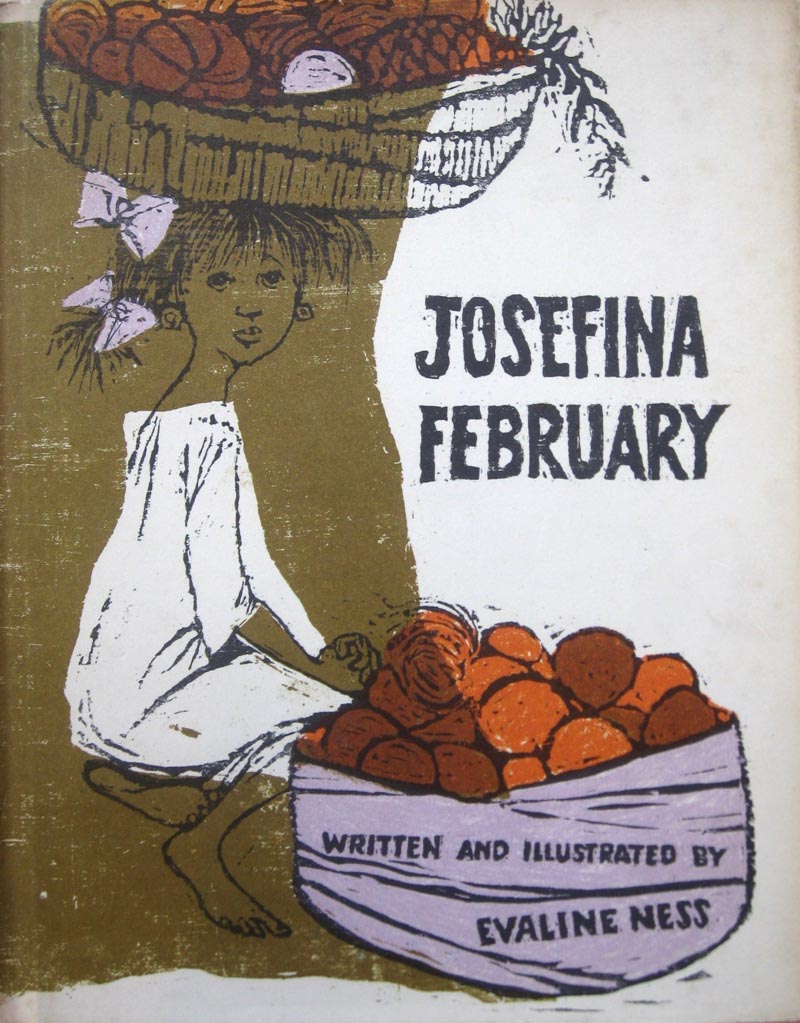
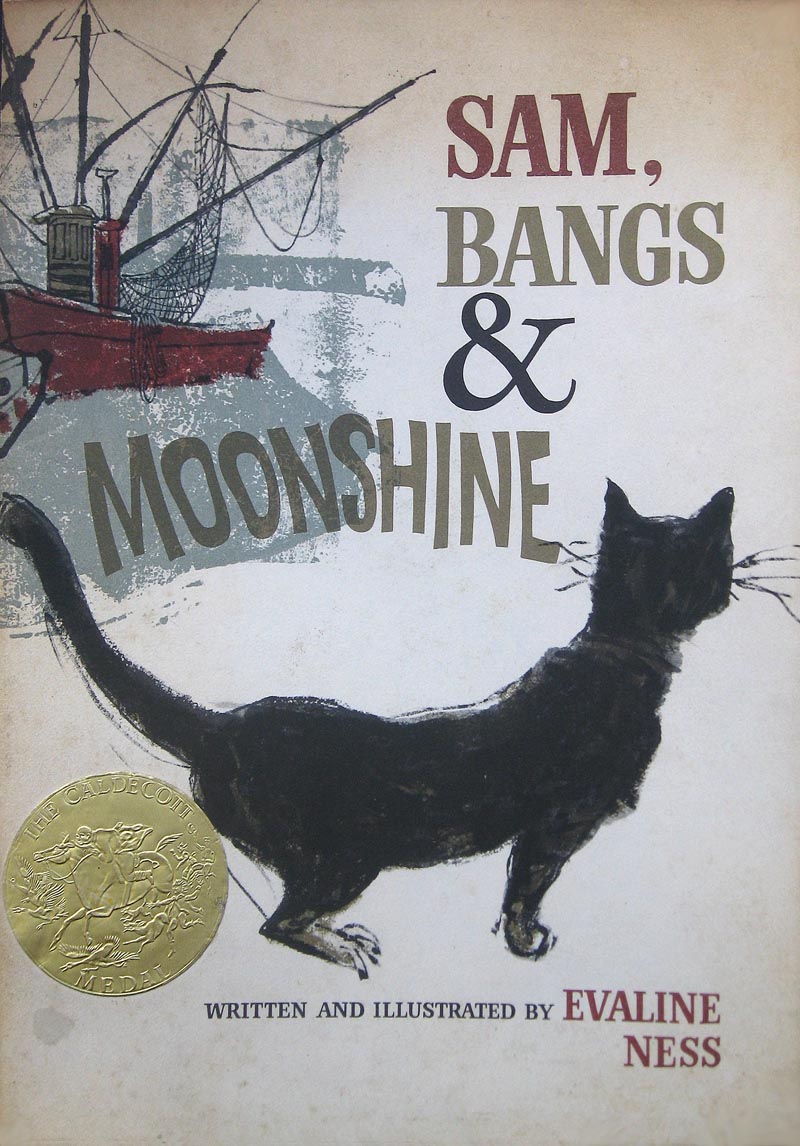

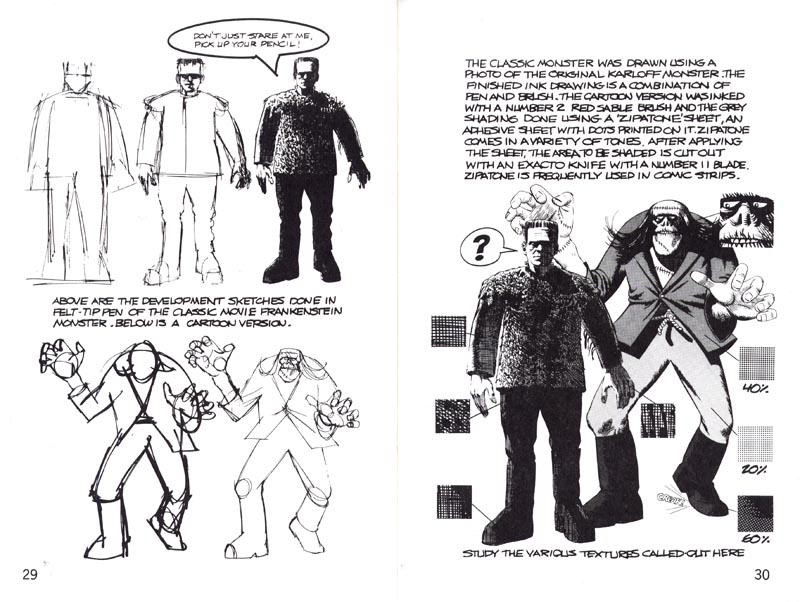
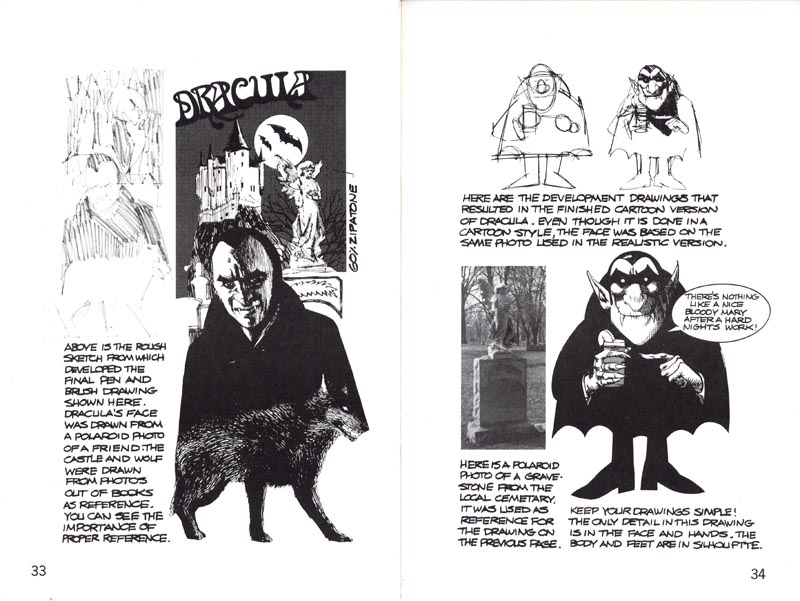
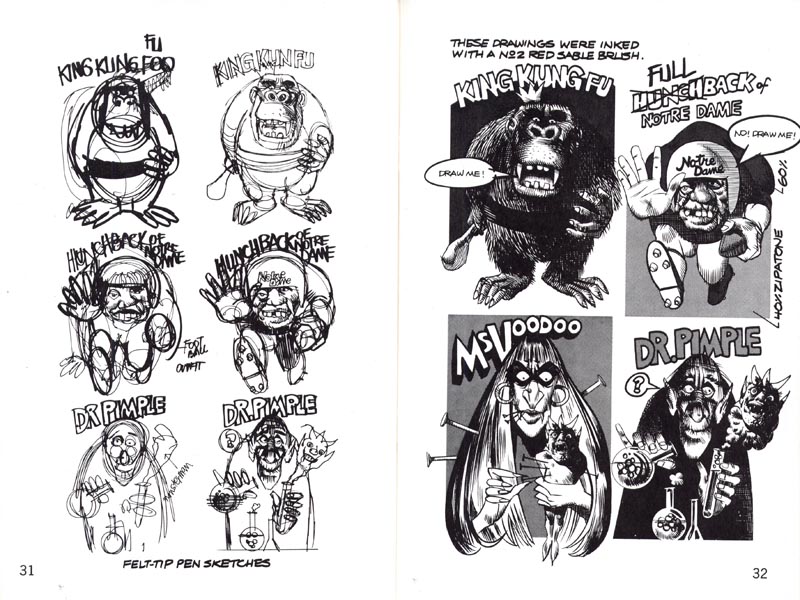

i hate how the weather would blow the balloons away. why weather, why?